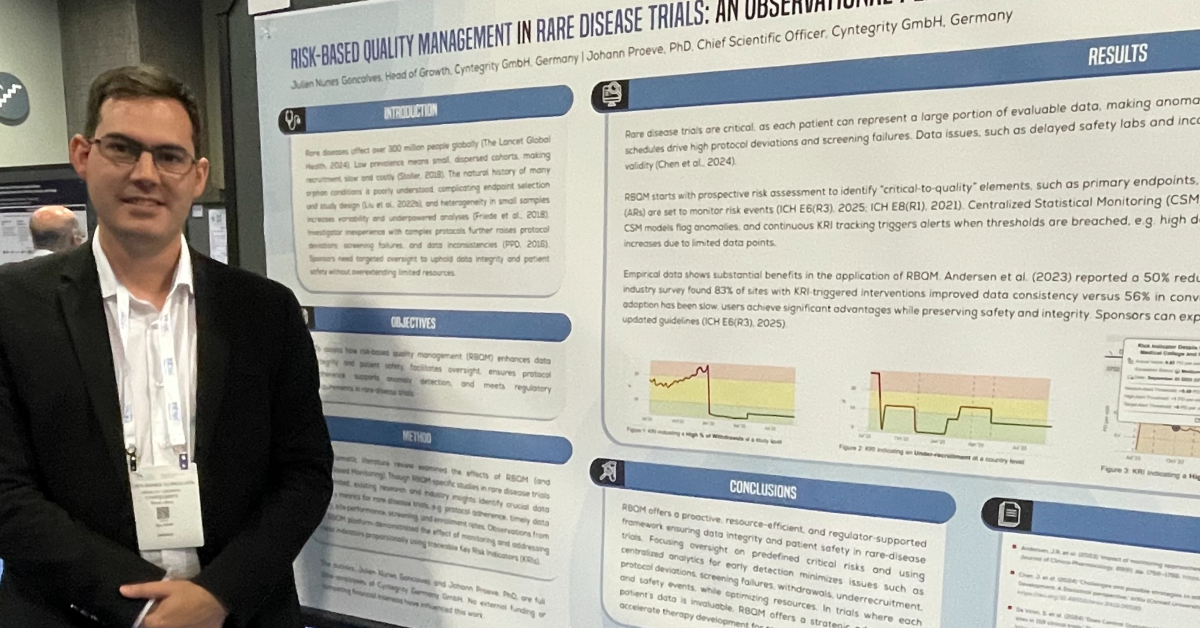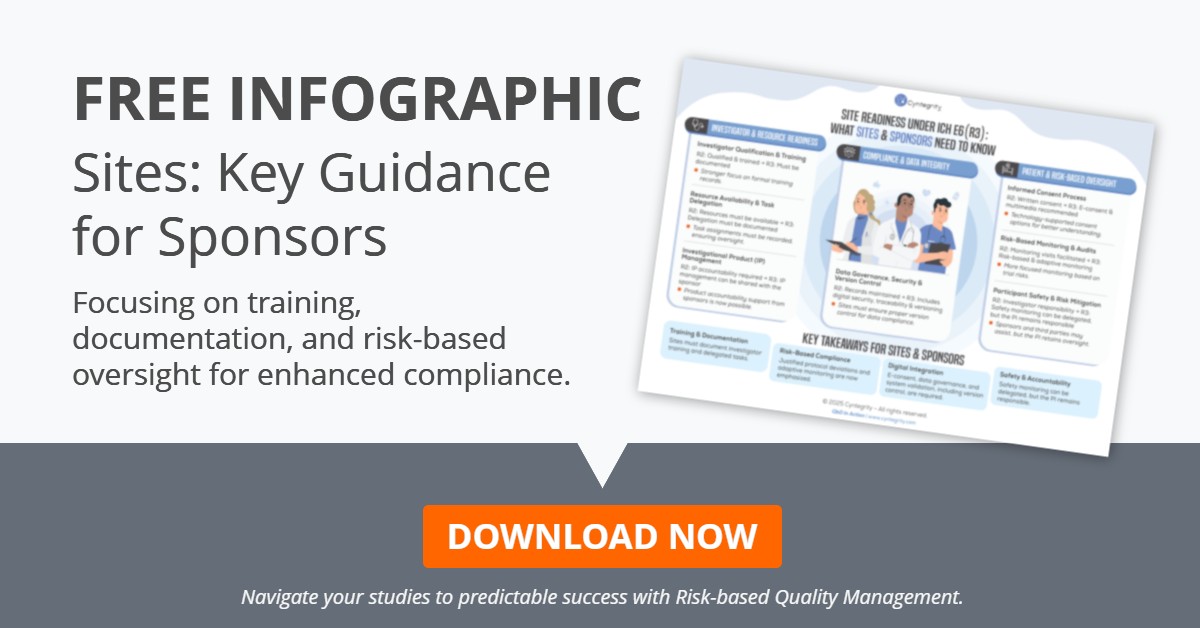Impact on RBQM and Integrated Risk Management in Clinical Trials
In January 2023, the International Council for Harmonisation of Technical Requirements for Pharmaceuticals for Human Use (ICH) released the final guideline titled “Q9(R1) Quality Risk Management.” This guideline, endorsed by both the FDA and EMA, is a revision of the 2006 guideline and addresses several critical areas in the pharmaceutical industry. This blog post will provide a summary of the guideline and discuss its relevance to Risk-Based Quality Management (RBQM) and integrated risk management in clinical trials.
Understanding the ICH’s Q9(R1) Quality Risk Management Guideline
The Q9(R1) Quality Risk Management guideline is a comprehensive document that provides a systematic approach to quality risk management. It addresses product availability risks due to manufacturing quality issues, lack of understanding as to what constitutes formality in Quality Risk Management (QRM) work, lack of clarity on risk-based decision-making, and high levels of subjectivity in risk assessments and QRM outputs.
The guideline emphasizes the importance of applying quality risk management principles and tools to different aspects of pharmaceutical quality. It also replaces the draft guideline “Q9(R1) Quality Risk Management” issued earlier.
Relevance to RBQM and Integrated Risk Management in Clinical Trials
The Q9(R1) guideline is particularly relevant to RBQM and integrated risk management in clinical trials. It provides a clear framework for identifying, assessing, controlling, and communicating risks, which are key components of RBQM. The guideline also encourages the use of a proactive approach to quality risk management, which aligns with the principles of RBQM.
Furthermore, the guideline emphasizes the importance of integrating quality risk management into existing operations, which is a key aspect of integrated risk management in clinical trials. It also highlights the need for ongoing risk review, which is crucial for maintaining the effectiveness of RBQM and integrated risk management strategies.
Comparison of Q9(R1) with E6(R3) and E8(R1) Guidelines:
| Areas of Comparison | Q9(R1) | E6(R3) | E8(R1) |
|---|---|---|---|
| Focus | Emphasizes on QbD, RBQM, and CTQ | Focuses on patient safety and data integrity | Focuses on design considerations for clinical studies |
| Quality Management | Quality should be built into the design phase | Emphasizes on integrating quality into the entire clinical trial process | Quality design should be considered at the planning stage |
| Risk Management | Detailed guidance on managing risks at system and trial level | Emphasizes on identifying, assessing, controlling, and reviewing risks | Discusses safety monitoring but does not address risk management |
| Monitoring | Role of data monitoring committee in ensuring safety | Emphasizes on the importance of monitoring for safety and efficacy | Importance of an independent data monitoring committee |
| Study Reporting | Provides some guidance on reporting results | Detailed guidance on reporting and documentation | Detailed instructions on reporting clinical study results |
Final Thoughts
The ICH’s Q9(R1) Quality Risk Management guideline is an invaluable resource for the pharmaceutical industry, especially in the context of RBQM and integrated risk management in clinical trials. The guideline’s emphasis on Quality by Design (QbD), Risk-Based Quality Management (RBQM), and Critical to Quality (CTQ) factors provides a robust framework for managing risks at the system and trial level.
When compared with the E6(R3) and E8(R1) guidelines, the unique focus of Q9(R1) on integrating quality into the design phase and its detailed guidance on risk management become evident. While E6(R3) emphasizes patient safety and data integrity throughout the clinical trial process, and E8(R1) focuses on design considerations for clinical studies, Q9(R1) provides a comprehensive approach to quality risk management.
By adhering to the principles and tools outlined in these guidelines, companies can enhance their risk management strategies, ensure the quality and safety of their products, and ultimately improve patient outcomes.
Extending Integrated Risk Management Across Drug Development
The principles and tools outlined in the ICH’s Q9(R1), E6(R3), and E8(R1) guidelines can serve as a robust foundation for extending integrated risk management across all aspects of the drug development process. This holistic approach to risk management can help ensure the quality, safety, and efficacy of pharmaceutical products from the early stages of development through to post-marketing surveillance.
Quality by Design (QbD) and Risk-Based Quality Management (RBQM): These principles, emphasized in both Q9(R1) and E6(R3), can be applied throughout the drug development process. By integrating quality into the design phase and using a risk-based approach to manage quality, companies can proactively identify and mitigate potential risks, ensuring the quality and safety of their products from the outset.
Comprehensive Risk Management: The detailed guidance on managing risks at the system and trial level provided in Q9(R1) and E6(R3) can be extended to all aspects of drug development. This includes preclinical studies, clinical trials, manufacturing, distribution, and post-marketing surveillance. By systematically identifying, assessing, controlling, and communicating risks, companies can ensure the integrity of their operations and the quality of their products.
Ethical Conduct and Patient Safety: The ethical considerations outlined in E6(R3) and E8(R1) are fundamental to all stages of drug development. Ensuring the rights, safety, and well-being of trial participants and patients is paramount, and these guidelines provide a comprehensive framework for maintaining high ethical standards.
Effective Data Management: The instructions on handling, record keeping, and reporting trial data provided in E6(R3) and E8(R1) are crucial for ensuring data integrity and accuracy. These principles can be applied to data management throughout the drug development process, from preclinical studies through to post-marketing surveillance.
Resources:
Download the free ICH Q9(R1) Quality Risk Management infographic!

NEW | The Clinical Researcher’s Guide to RBQM
Discover the future of clinical research with “The Clinical Researcher’s Guide to RBQM” by Artem Andrianov, PhD, and Johann Proeve, PhD.
This comprehensive guide (160+ pages Kindle edition) explores the principles of risk-based quality management, offering invaluable insights for optimizing clinical trials. Don’t miss your chance to be at the forefront of innovation in biopharmaceutical product development.







